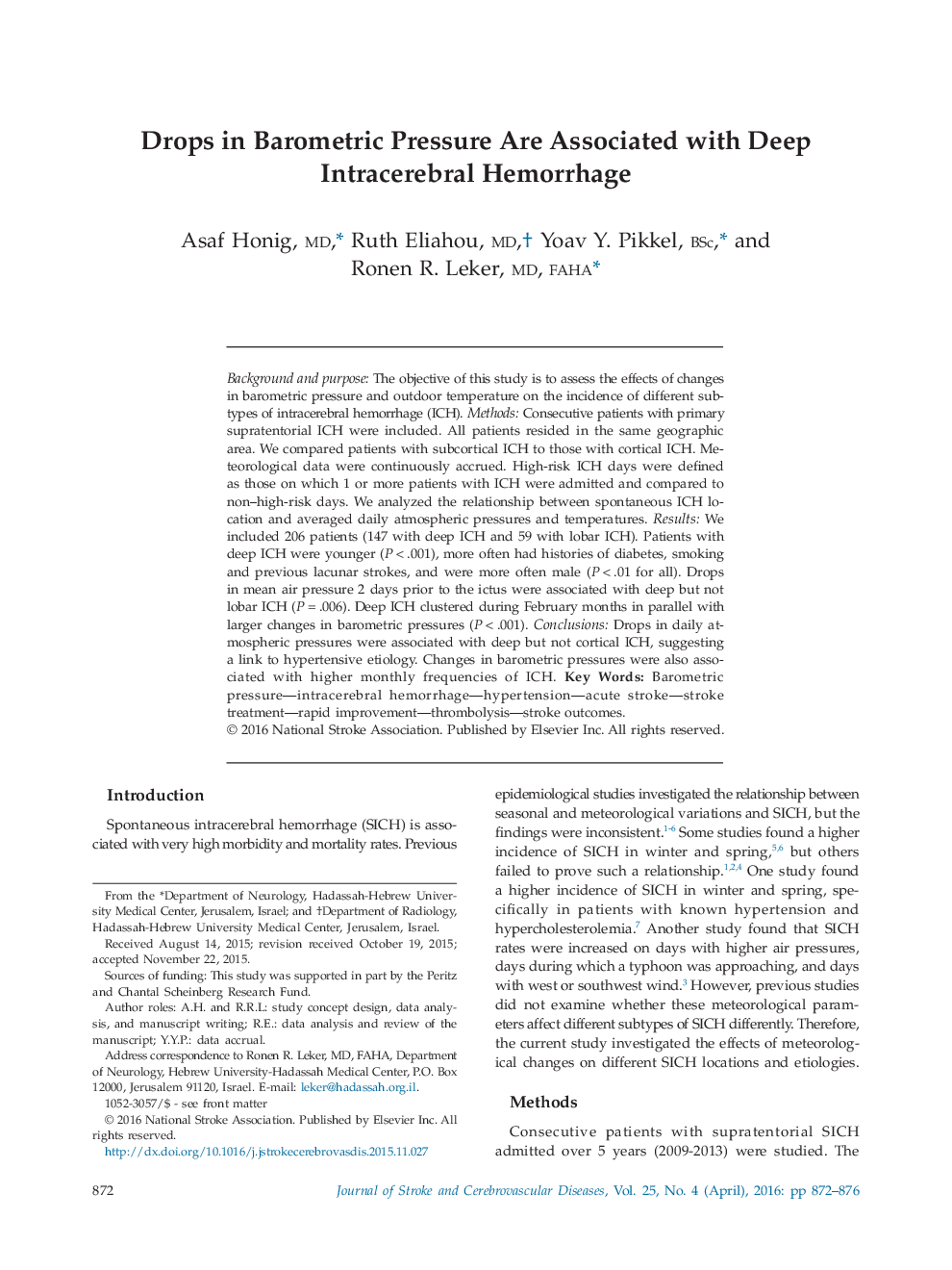| Article ID | Journal | Published Year | Pages | File Type |
|---|---|---|---|---|
| 2701620 | Journal of Stroke and Cerebrovascular Diseases | 2016 | 5 Pages |
Background and purposeThe objective of this study is to assess the effects of changes in barometric pressure and outdoor temperature on the incidence of different subtypes of intracerebral hemorrhage (ICH).MethodsConsecutive patients with primary supratentorial ICH were included. All patients resided in the same geographic area. We compared patients with subcortical ICH to those with cortical ICH. Meteorological data were continuously accrued. High-risk ICH days were defined as those on which 1 or more patients with ICH were admitted and compared to non–high-risk days. We analyzed the relationship between spontaneous ICH location and averaged daily atmospheric pressures and temperatures.ResultsWe included 206 patients (147 with deep ICH and 59 with lobar ICH). Patients with deep ICH were younger (P < .001), more often had histories of diabetes, smoking and previous lacunar strokes, and were more often male (P < .01 for all). Drops in mean air pressure 2 days prior to the ictus were associated with deep but not lobar ICH (P = .006). Deep ICH clustered during February months in parallel with larger changes in barometric pressures (P < .001).ConclusionsDrops in daily atmospheric pressures were associated with deep but not cortical ICH, suggesting a link to hypertensive etiology. Changes in barometric pressures were also associated with higher monthly frequencies of ICH.
